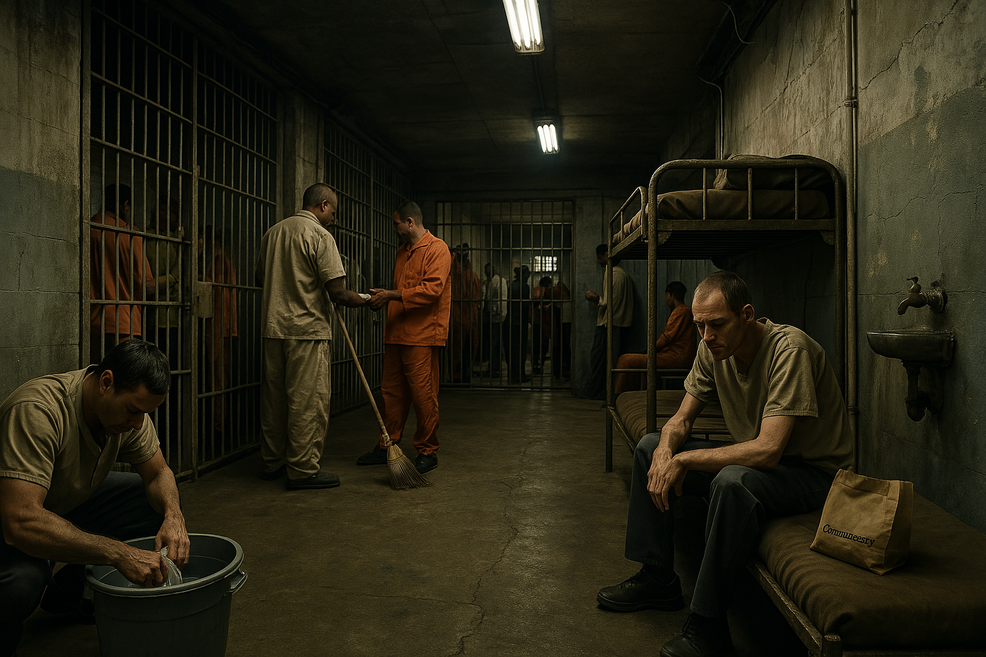The Federal Bureau of Prisons (BOP) has long struggled with balancing security, rehabilitation, and humane treatment. But recent policy changes—particularly those involving inmate compensation and access to basic necessities—have tipped the scale toward dysfunction. By slashing inmate pay by as much as 80% and failing to provide sufficient work opportunities, the BOP has created a volatile economic vacuum within prison walls, destabilizing the very populations it is charged with managing.
The Collapse of Inmate Wages
For decades, inmates could rely on modest but consistent wages for work assignments, typically earning between $0.12 to $0.40 an hour. These funds were often used to purchase hygiene items, food, and other commissary goods. But since 2020, wages have plummeted—often to less than $0.10 an hour—while the number of available jobs has remained static or declined, despite a growing inmate population. As of 2023, federal prisons held over 158,000 inmates, yet fewer than half held work assignments, according to BOP’s own data.
In theory, indigent inmates—those without any income—can apply for free hygiene items like soap, toothpaste, and razors. In practice, the application process is convoluted and requires a certain level of literacy, bureaucratic fluency, and often English proficiency. Ironically, the very populations that most need this support—illiterate or non-English speaking inmates—are the least equipped to access it.
Moreover, the cost of these basic supplies is not funded by taxpayers, but through the Inmate Trust Fund, which profits from commissary sales. That makes the denial of essentials to indigent inmates not only ethically questionable, but economically unnecessary.
Survival Through Subculture
With little to no official income, inmates turn to informal networks for survival. Upon arrival, new inmates often receive "care packages" from members of their racial, geographic, or gang-affiliated groups—collectively referred to as their "car." These packages contain basic hygiene items and occasionally food, but the support is usually short-lived. After that, inmates are left to fend for themselves.
This economic gap has given rise to a prison “hustle” culture, where inmates engage in unofficial jobs such as cleaning cells, mending clothes, or repairing electronics. While mostly harmless, these roles barely meet subsistence needs. Others engage in informal bartering, leveraging leftovers from food service or excess cleaning supplies to run microbusinesses. These activities, while technically against policy, have long served as stabilizing forces in the prison ecosystem.
From Hustles to Havoc
As job scarcity increases and hustle opportunities dwindle, more inmates find themselves with zero income—setting off a chain reaction of instability. The majority of inmates, particularly in federal facilities, are incarcerated for drug-related offenses. Many come from socioeconomically disadvantaged backgrounds and enter prison with minimal education, job experience, or prospects.
In such a vacuum, selling drugs becomes the default economic strategy for many. With no other viable options, and surrounded by a market of addicts, the prison drug trade flourishes. Addicted inmates often try to front drugs with promises of resale, but inevitably consume the product themselves. The result is a toxic cycle of addiction, debt, and desperation.
The effects ripple outward. Junkies begin to steal anything they can find—wires, outlets, screws, and other infrastructure components—degrading the already crumbling facilities. The cumulative effect is a silent erosion of prison infrastructure and order.
Institutional Apathy and Its Consequences
The BOP saw this coming. The 2020 pay cuts were implemented with the belief that stricter discipline would maintain order, but punishment without incentive is a failing formula. When inmates have nothing left to lose, threats of disciplinary action become hollow. The loss of TV privileges, for example, means little when living conditions already mirror those of a developing nation.
The broader cost of this mismanagement is staggering. Prisons that lack economic structure become breeding grounds for violence, corruption, and recidivism. Without reform, the very purpose of incarceration—rehabilitation and eventual reintegration—becomes an illusion.
Solutions
- Reinstate Meaningful Inmate Pay: Restore wages to pre-2020 levels to provide inmates with legitimate economic pathways.
- Expand Job Opportunities: Create more internal work assignments and partnerships with external agencies for remote or virtual work.
- Simplify Access to Hygiene: Remove bureaucratic barriers that prevent indigent inmates from obtaining basic supplies.
- Support Constructive Hustles: Allow and regulate inmate-run services that promote self-sufficiency and community engagement.
- Target Drug Abuse Proactively: Increase drug testing and separate treatment populations to reduce the impact of addiction-fueled criminal activity.
- Invest in Education and Training: Provide literacy, vocational, and entrepreneurial programs tailored to real-world employment.
- Utilize the Inmate Trust Fund Transparently: Ensure that profits from commissary sales are reinvested into programs that benefit the inmate population.
The chaos inside our federal prisons isn’t accidental. It’s a product of deliberate policy decisions and systemic neglect. If we are to reduce recidivism and improve civil society, the BOP must stop treating inmate poverty as a disciplinary tool and start building a sustainable model for correctional economics.
